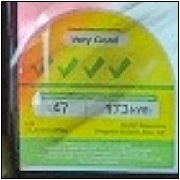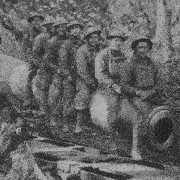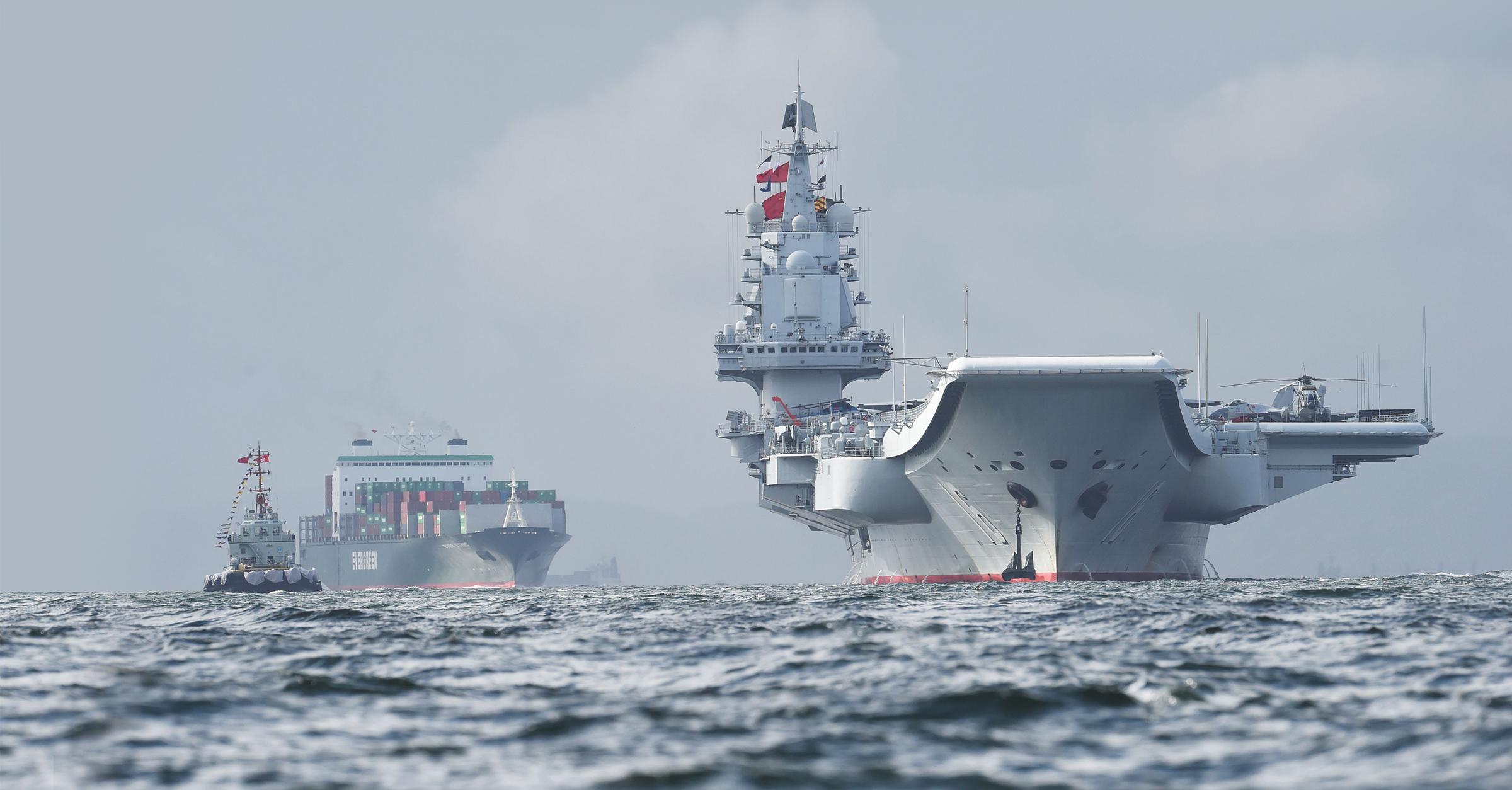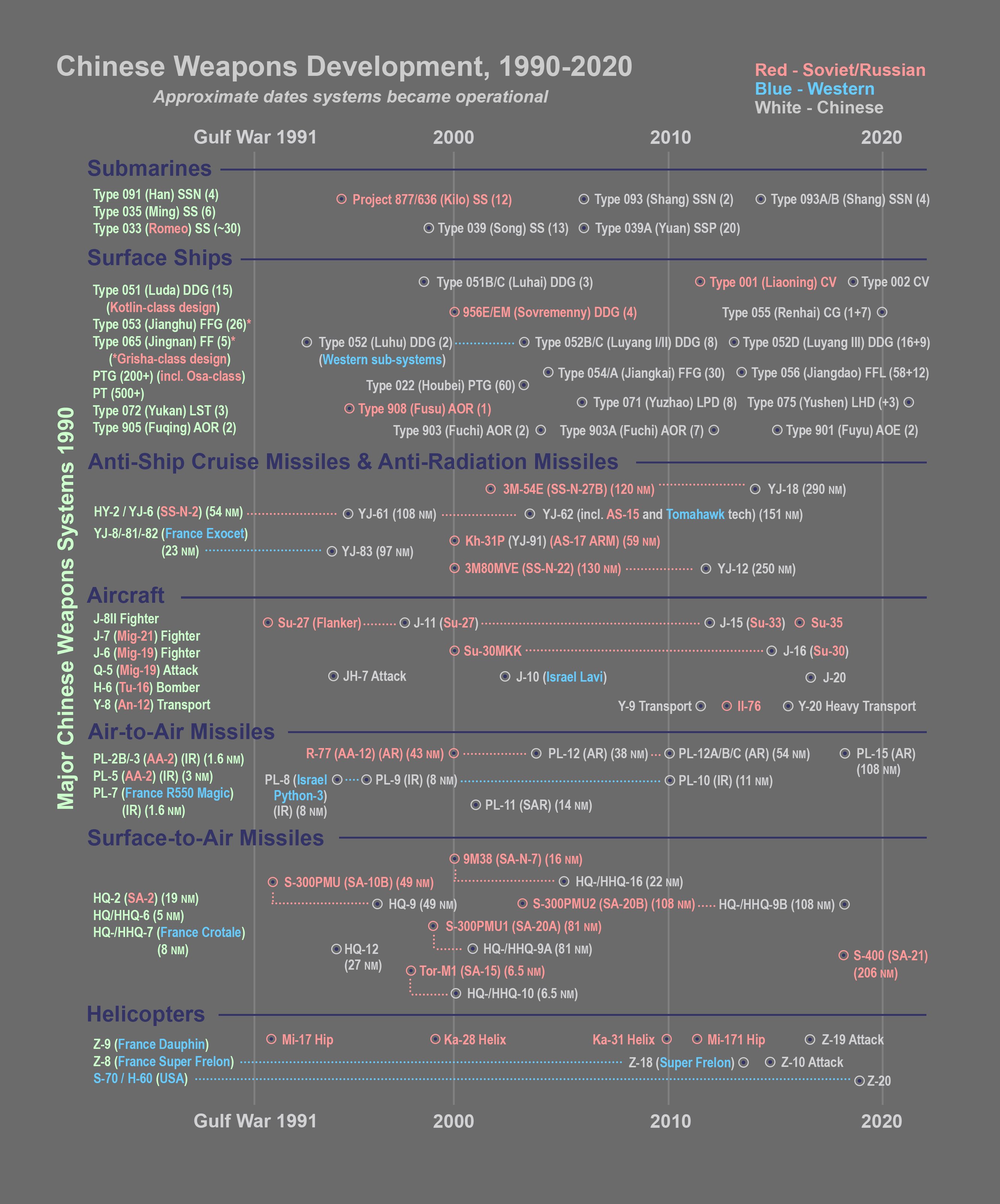|
Danann posted:https://twitter.com/UKDefJournal/status/1747025493738537141 Like me at work suddenly remembering there was a task that I should have kicked off weeks ago, except for these guys, they needed to have started the procurement process back in 2013 lol.
|
|
|
|

|
| # ? May 25, 2024 18:14 |
|
Royal Navy's gone woke
|
|
|
|
DancingShade posted:The empire in current state is stymied by a small regional power. That's my take away. then they had weapons and territorial knowledge. woops
|
|
|
|
JAY ZERO SUM GAME posted:colonial powers ruled with relative ease until their subjects got the weapons too and timing, balls and geopolitical acumen
|
|
|
|
JAY ZERO SUM GAME posted:colonial powers ruled with relative ease until their subjects got the weapons too You can also see this in the difficulty establishing colonies where parity in weapons existed. In Northwest Africa, where African societies had access to smoothbore muskets in large numbers, and Europeans were armed with the same, the Europeans did not establish colonies and skirmished were usually more or less even. The same goes for the Iroquois for much of the 17th and 18th centuries, and the Maori as well. Later, obviously the Boers having Mauser rifles and field guns was a problem, in Morocco the Spanish were fought to a standstill in the Rif War, Italy's first invasion of Ethiopia ended in disaster.
|
|
|
|
Frosted Flake posted:It's a bit funny of the CMO devs to draw attention to this, especially considering how much of their business is selling the PE lol. the professional-grade training simulation being terminally infected with propaganda is very, very funny
|
|
|
|
Mister Bates posted:the professional-grade training simulation being terminally infected with propaganda is very, very funny My concern is that it's first as farce, then as tragedy, as they put these assumptions to the test.
|
|
|
Frosted Flake posted:You can also see this in the difficulty establishing colonies where parity in weapons existed. In Northwest Africa, where African societies had access to smoothbore muskets in large numbers, and Europeans were armed with the same, the Europeans did not establish colonies and skirmished were usually more or less even. The same goes for the Iroquois for much of the 17th and 18th centuries, and the Maori as well. do you think hypersonic missiles are an emerging trump card? the us seems to be betting on rail guns and lasers but those seem like boondoggles because they're extremely expensive and impractical. and stealth stuff, which also seems pretty useless when it can be defeated by cheap drone swarms
|
|
|
|
|
Hatebag posted:do you think hypersonic missiles are an emerging trump card? the us seems to be betting on rail guns and lasers but those seem like boondoggles because they're extremely expensive and impractical. and stealth stuff, which also seems pretty useless when it can be defeated by cheap drone swarms Fleet Tactics and Naval Operations is very convincing in Chapter 10 that technology is not a trump card, but institutions are. It takes an institution capable of producing, distributing, supplying the new technology, developing doctrine and tactics for it, and training like crazy, to make good use of it. So, a competent USN could continue to perform at a high level in the face of emerging technology, and play to the best strengths of their own. The issue is that we don't have a competent USN, and most theorists believe (per the discussion in the source and USNI) that the the USN could not come out on top of a fleet engagement with the weapons of the 1960's. Without adequate training, and with the fleet breaking down, undermanned and dispersed all over the world, an enemy that could concentrate and use the standard missile tactics with P-15 and Exocet would defeat the USN. Hypersonic missiles would in effect be the same thing, but with faster engagements. The same is true in the reverse. A USN that is not capable of effectively employing their missiles, guns, and point defence systems now will not benefit from new weapons and point defence systems, particularly as the doctrine, training, supply and deployment problems that exist now will be magnified by bringing new weapons into service. I realize this is boring, but if you look at any naval action historically, the German guns at Jutland were more or less the same, the French and Spanish guns at Trafalgar likewise, it was institutional strength that brought about victory. There's an entire civil service job code dedicated to this, but it's perennially unpopular, undermanned, and neglected 
|
|
|
|
Frosted Flake posted:Information is ammunition The Chad Jihad posted:You dare to refuse my batchall?!
|
|
|
|
sum posted:There's nothing wrong with wargaming. It makes sense to put in the stupid wonderwaffen to see if, for example, it's worth it to pay the gazillions of dollars for the dumb special 155mm ammo. The problem is when planners make a bunch of optimistic assumptions because they want something to be true, put those assumptions into the wargame, and then go gee whiz my simulations prove that the thing I want to happen would definitely happen. Beyond all the well known fuckery about Millennium Challenge, didn't it also rely on a buch of scifi bullshit that doesn't exist today and certainly didn't exist in 2002?
|
|
|
Frosted Flake posted:Fleet Tactics and Naval Operations is very convincing in Chapter 10 that technology is not a trump card, but institutions are. It takes an institution capable of producing, distributing, supplying the new technology, developing doctrine and tactics for it, and training like crazy, to make good use of it. yeah, that makes sense. but since they aren't going to suddenly realize that the entire thing is hosed, they'll keep chasing wonder weapons that are basically just vehicles to move bribe money to the people in charge of procurement. and then not be able to effectively use them. that's a comforting thought
|
|
|
|
|
Iran is shooting ballistic missiles at Pakistan, can we update the thread title to "is losing"
|
|
|
|
The Oldest Man posted:can we update the thread title to "is losing" People have been saying this. What would it take to change the title? Sinking of a carrier? Israel abolished? American bases in the middle east halved?
|
|
|
|
sinking of a usn ship or abandoning a base would do it imo edit: or shooting down a manned fighter jet
|
|
|
|
Lazerpig 100 long tweet thread about how the F-35 shootdown is actually just a Sino-Russo-Persian Chud disinformation propaganda fakeand how this AI art of the pilot happily landing is realer than the blurry telegram video of the hit. 1/1000
|
|
|
|
shooting down a jet has happened before. losing a carrier would be a real uh oh moment. that's not happened since WWII. seems pretty unlikely here, though
|
|
|
|
JAY ZERO SUM GAME posted:losing a carrier would be a real uh oh moment. that's not happened since WWII. seems pretty unlikely here, though it's not a completely outlandish possibility, though. they have anti-ship ballistic missiles, carriers are packed to the brim with aviation fuel and bombs, BMD is an imperfect science. it's not likely but less likely things have happened in wars tons of times.
|
|
|
|
The Oldest Man posted:it's not a completely outlandish possibility, though. they have anti-ship ballistic missiles, carriers are packed to the brim with aviation fuel and bombs, BMD is an imperfect science. it's not likely but less likely things have happened in wars tons of times. Maybe Jodie Foster can make vlogs talking about where the USS Ronald Reagan Aircraft Carrier is located at any moment.
|
|
|
|
The Oldest Man posted:it's not a completely outlandish possibility, though. they have anti-ship ballistic missiles, carriers are packed to the brim with aviation fuel and bombs, BMD is an imperfect science. it's not likely but less likely things have happened in wars tons of times. is it more likely that Ansar Allah or the USN sink a carrier?
|
|
|
|
Hatebag posted:yeah, that makes sense. but since they aren't going to suddenly realize that the entire thing is hosed, they'll keep chasing wonder weapons that are basically just vehicles to move bribe money to the people in charge of procurement. and then not be able to effectively use them. that's a comforting thought they realize it's hosed, though they probably don't consciously admit that part to themselves, let alone anyone else. But that also just further incentivizes them to lean into the MIC grift because if you can't beat 'em, might as well wet your beak too, y'know? GD or Lockmart or Raytheon or whatever else will take care of you when you decide it's time to retire. I do know one retired officer who remained enough of a true believer to be genuinely and viscerally disgusted with his private sector sincecure that he walked out and went back in as civilian staff. But that's not at all normal.
|
|
|
|
Trabisnikof posted:is it more likely that Ansar Allah or the USN sink a carrier? Weren't the USN the ones that didn't turn their carriers into giant fuel-air bombs?
|
|
|
|
Z the IVth posted:Weren't the USN the ones that didn't turn their carriers into giant fuel-air bombs? USN carriers are still filled with fuel despite being nuclear-powered. The fuel is for all the jets. BearsBearsBears has issued a correction as of 23:47 on Jan 17, 2024 |
|
|
|
JAY ZERO SUM GAME posted:shooting down a jet has happened before. Lets be honest here. It's more likely that one of the carriers will catastrophically break down, get grounded due to navigation error or collide with one of its own escorts. "But that's crazy unlikely!" Maybe with the old standards but are seeing a competency crisis. If you've got a pulse you've got a place.
|
|
|
|
The Oldest Man posted:it's not a completely outlandish possibility, though. they have anti-ship ballistic missiles, carriers are packed to the brim with aviation fuel and bombs, BMD is an imperfect science. it's not likely but less likely things have happened in wars tons of times. 
|
|
|
|
Z the IVth posted:Weren't the USN the ones that didn't turn their carriers into giant fuel-air bombs? I think they're more referring to a John McCain-type scenario
|
|
|
|
I think so long as you aren't attacked while refueling your entire air arm and have the deck covered in bombs like the IJN Akagi you can probably not blow up spectacularly. Just burn a bit.
|
|
|
|
Were the biggest battleships in WW1 not get destroyed in a thunderdome style face-off? Only the big ships in WW2 get wrecked?
|
|
|
|
DancingShade posted:I think so long as you aren't attacked while refueling your entire air arm and have the deck covered in bombs like the IJN Akagi you can probably not blow up spectacularly. Just burn a bit. The US navy is infamous for running shifts way too long for its sailors in addition to not having enough of anyone. It'd just take one undermanned shift of overworked and exhausted plane maintenance guys cutting corners to fill quota on turnaround and poof goes the carrier.
|
|
|
|
THE US NAVY,
|
|
|
|
|
stephenthinkpad posted:Were the biggest battleships in WW1 not get destroyed in a thunderdome style face-off? Only the big ships in WW2 get wrecked? they did not. Jutland was undecisive and when the Imperial German Navy's high command wanted to send the Hochseeflotte on one last death ride against the Royal Navy in October 1918, the refusal of the sailors to do so effectively kicked-off a revolution most of the fleet was interned at Scapa Flow, and when rumor spread that the British were intending to seize the ships as part of the Treaty of Versailles, the Germans panicked and ordered the seacocks opened to scuttle the ships we never had our title fight between two punch-drunk boxers in their prime (end quote)
|
|
|
|
stephenthinkpad posted:Were the biggest battleships in WW1 not get destroyed in a thunderdome style face-off? Only the big ships in WW2 get wrecked? The only naval fight that comes to my mind besides Juntland is the battle off the Falksland Islands. Where the German East Asian Squadron was almost totally destroyed without sinking or really damaging a single British ship.
|
|
|
|
OhFunny posted:The only naval fight that comes to my mind besides Juntland is the battle off the Falksland Islands. Where the German East Asian Squadron was almost totally destroyed without sinking or really damaging a single British ship. Dogger Bank and Heligoland Bight as well, and the pursuit of Goeben and Breslau.
|
|
|
|
The Oldest Man posted:last count was they had spent a billion dollars acquiring about 300 total examples over eight years so, realistically speaking, china builds ships faster than the US builds anti-ship missiles. Yeah the stealth missiles have this weird shape that I suppose helps with stealth:   the russians shot down enough that they have to be used in mass volleys so quantity has a quality of its own
|
|
|
|
It's really cool how the United States spent three decades prancing around in their uni-power world, never truly worried about a peer adversary, never concerned with the historical trauma they left behind, and how they're coasting further into decline. It's sort of like a high school bully slowly discovering that they were actually surrounded by late bloomers observing their antics, taking careful notes, and biding their time the entire time. That said, It's also remarkable in how the PRC very carefully studied the Gulf War and essentially revolutionized their entire military philosophy, structure, and doctrine. It should be deeply unsurprising to anyone that the PRC would do this, especially during the collapse of the Soviet Union -- and especially with the prospect of what an American-led future might look like. Let's use a primary source to whet our palette first, Chinese Fascinated by Gulf War, Strongly Back U.S. (LA Times, 1991): quote:Televised displays of U.S. weapons technology have deeply impressed the Chinese. And now, the point of today's post - a very long article excerpt that really shows where this all may have truly "begun": the U.S. Naval Institute -- China's Desert Storm Education (2021) quote:
Hubbert has issued a correction as of 04:26 on Jan 18, 2024 |
|
|
|
https://www.youtube.com/watch?v=Hg64H8jwheQ love this clearsighted optimism
|
|
|
|
"In the 30 years since the Gulf War, PLA innovation has been all about adaptation and improvement, with little in the way of originality." Who loving cares?! What a loving asinine argument. An adapted and improved weapon kills you just as a dead as an original one, probably more often since it's been proved to work and likely has been produced in quantity.
|
|
|
|
goddamn they cleaned the varyag up good, you'd never be able to tell this was once this 
|
|
|
|
quote:Raskolnikov38 posted:goddamn they cleaned the varyag up good, you'd never be able to tell this was once this holy poo poo it really will buff out
|
|
|
|

|
| # ? May 25, 2024 18:14 |
|
Frosted Flake posted:"In the 30 years since the Gulf War, PLA innovation has been all about adaptation and improvement, with little in the way of originality." I was just going to post this to ask you about it my man lmao
|
|
|






































